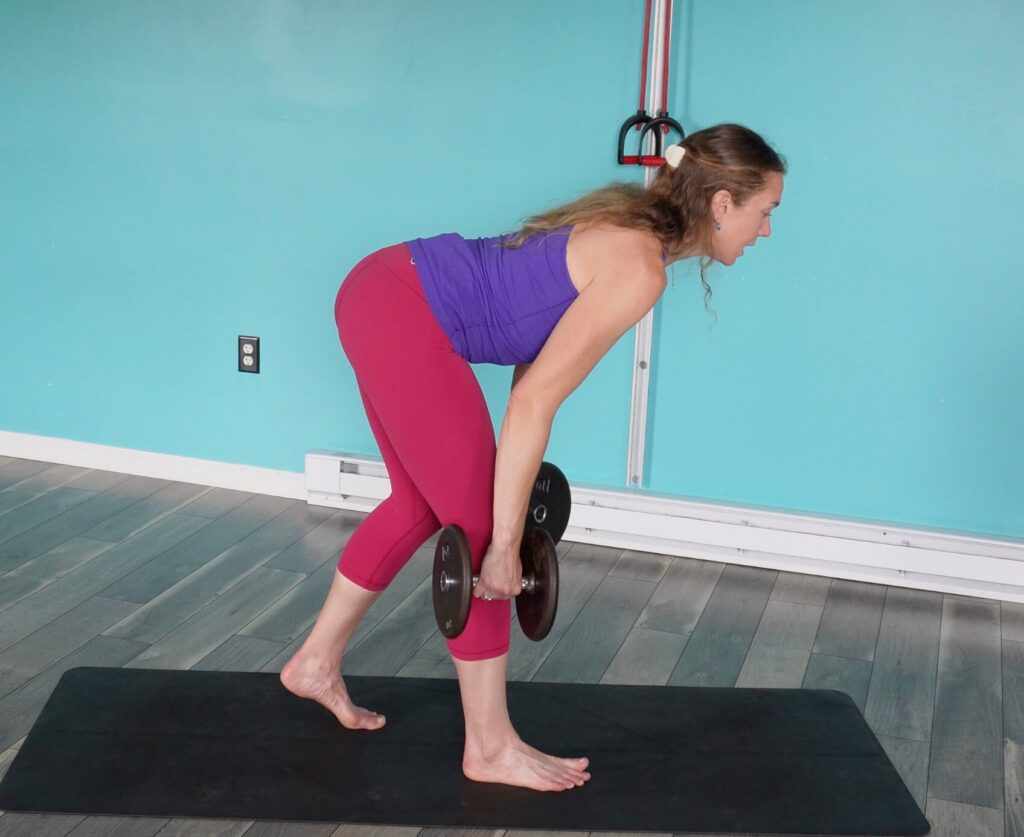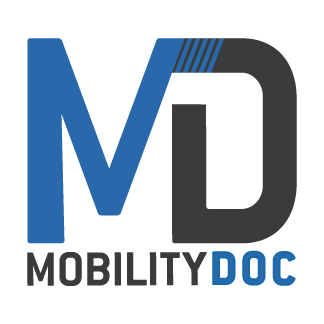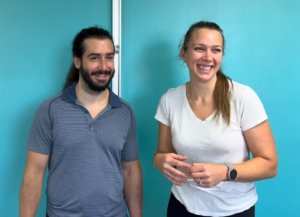Most people think of strength training as just loading up a barbell and moving heavy weight. But real strength—the kind that keeps you injury-free, explosive, and able to do what you love—starts with how well your brain and body work together. The single leg RDL doesn’t just build muscle. It sharpens balance, coordination, and body awareness—skills that matter just as much as raw strength.
What is a Single Leg RDL?
“RDL” stands for Romanian Deadlift. It’s a hip-hinge exercise that targets your hamstrings and glutes. It can be done in many variations including asymmetrical, kickstand, rear foot elevated, and more. The single leg version takes it up a notch by making you balance on one leg while hinging at the hips. You can think of it as strength training + balance training rolled into one.

Why the Single Leg RDL is Different
1. It Connects Your Brain To Your Body
Are you that clumsy person that trips everywhere you go? That’s likely a proprioception problem—your body not knowing exactly where it is in space. The single leg RDL forces stabilizers in your foot, ankle, hip, and core to wake up and communicate with your brain. These signals help your brain tell your body when and where to fire while working to maintain proper positioning.
2. It Trains Stability AND Strength
Most exercises either build strength (squats, deadlifts) or balance (standing on one foot). The single leg RDL does both. You’re strengthening your hamstrings and glutes while teaching your body to stay steady under control. Once you get comfortable with the movement, the challenge doesn’t end there. You can up the anti by doing this exercise with weight or changing to a more difficult variation.
3. It Carries Over to Sports and Life
- Runners → better push-off power, fewer hamstring pulls, more smooth and stable running.
- Lifters→ better hip hinge mechanics, stronger squats
- Everyday life → picking up groceries, climbing stairs, staying agile.
4. It’s a Back-Friendly Deadlift Option
You still get the posterior chain benefits without having to load heavy weight on your spine.
How to Do It (Without Falling Over)
- Stand tall, holding a dowel behind your back. (this helps make sure you’re moving correctly)
- Soften your standing knee slightly.
- Hinge at the hips, keeping them square, sending your free leg straight behind you.
- Keep your back neutral and core engaged.
- Lower until you feel a stretch in your hamstrings or you reach 90 degrees.
- Drive through your standing heel to return to start.
Mobility-Doc Pro Tip: Move slow. If you wobble, that’s your stabilizers working. Balance improves with practice. If you’re too wobbly… you might want to check out some other modifications.
Common Mistakes to Avoid
- Rounding your back: Keep your spine long, think about staying straight from your heel to the top of your head.
- Rotating your hips open: Keep them square to the floor.
- Rushing the movement: It’s about control, not speed.
When to Use the Single Leg RDL
I think the better question is when not to use it… which there is almost never a bad time to incorporate this exercise! It’s a great go to exercise for just about everything.
- Warm-Up Primer: Bodyweight version for balance + activation.
- Strength Training: Add dumbbells/kettlebells for muscle building.
- Rehab/Prehab: Great for anyone rehabbing hamstring or glute injuries or just trying to improve their hip hinge mechanics.
Quick FAQ
Q: What muscles does the single leg RDL work?
A: Mainly hamstrings, glutes, and lower back, with stabilizers in your hips and core.
Q: Is it good for beginners?
A: Yes—just start bodyweight only and build balance first.
Q: How often should I do it?
A: 2–3 times per week, 2–4 sets of 8–10 reps per leg.

The single leg RDL is more than a strength move. It’s a way to train your brain and body to work together, so you stay balanced, powerful, and resilient—whether you’re running, lifting, throwing, or just living life. Never stop doing what you love. Train smarter. Start with the single leg RDL.
Fuel Your Powerhouse
Your hips are the powerhouse of your body. Whether you’re running, lifting, or just getting through the day, everything flows through them.
Here’s the problem: most people only train strength or flexibility. But strong + stiff hips break down just as fast as flexible + weak hips.
👉 That’s why MDRx: Hips is designed to give you the best of both worlds:
Flexibility → Unlock tight hip flexors, glutes, and adductors so you move freely.
Stability → Build control and strength where it matters most, so you stay solid and injury-resistant.
This isn’t random stretching or endless clamshells. It’s a strategic progression built by doctors who treat athletes every day.
✅ Feel stronger in your lifts.
✅ Run smoother and pain-free.
✅ Move with confidence wherever you go.
Because when your hips move better, everything moves better.
Ready to fix your foundation? MDRx: Hips is here for you.





